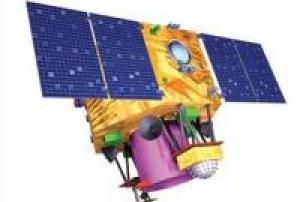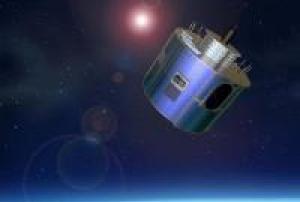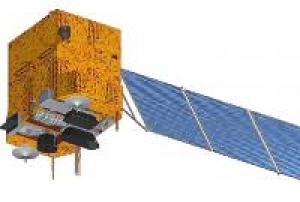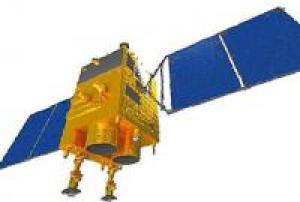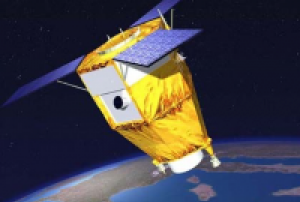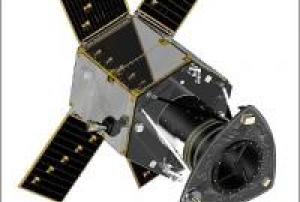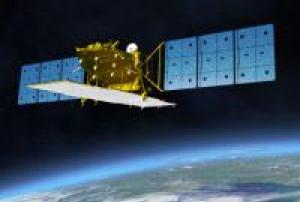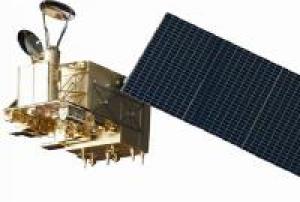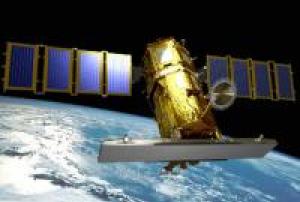Glacial Lake Outburst
Definition
Facts and figures
Further information
UN-SPIDER Regional Support Offices with hazard-specific expertise
Related content on the Knowledge Portal
Cartosat-2 is an advanced remote sensing satellite with a single panchromatic camera (PAN) capable of providing scene-specific spot imageries for cartographic applications. The camera is designed to provide imageries with better than one meter spatial resolution and a swath of 10 km. The satellite will have high agility with capability to steer along and across the track up to + 45 degrees. It will be placed in a sun-synchronous polar orbit at an altitude of 630 km. It will have a revisit period of four days. The re-visit can be improved to one day with suitable orbit manoeuvres.
Several new technologies like two mirror on axis single camera, Carbon Fabric Reinforced Plastic based electro optic structure, lightweight, large size mirrors, JPEG like data compression, advanced solid state recorder, high-torque reaction wheels and high performance star sensors are being employed in Cartosat-2.
Beginning with Cartosat 2C, a Multi-spectral camera was added…
read more22/06/2016Today, weather satellites scan the whole Earth, meaning not a single tropical storm or severe weather system goes undetected. The early detection and warnings they provide have saved thousands of lives.
Meteosat data is of unique value to nowcasting of high impact weather in support of safety of life and property.
It has been shown to improve weather forecasts and severe weather warnings which, in turn helps limit damage to property and benefits industry e.g. transport, agriculture and energy.
Meteosat-11 is the prime operational geostationary satellite, positioned at 0 degrees and providing full disc imagery every 15 minutes. It also provides Search and Rescue monitoring and Data Collection Platform relay service.Instruments:
read more
GERB (Geostationary Earth Radiation Budget)
MSG Comms (Communications Package for MSG)
SEVIRI (Spinning Enhanced Visible and Infra-Red Imager)
16/07/2015KOMPSAT-3A is the world’s first civilian satellite that is equipped with a high-resolution, infrared(MWIR) sensor which enables nighttime observation. It also provides the optical images with high resolution of 50 cm or less for the second in the world following the US.
read more
The technology of improving the optical image quality by 30% or more without degradation using diagonal data to provide 38-cm-class images was developed for the second following the EU.
The high-resolution electro-optical spaceborne camera AEISS-A(Advanced Earth Imaging Sensor System-A) developed by KARI and accommodated on KOMPSAT-3A platform features 50cm class optical photography, which marks the highest resolution among cameras mounted on domestic satellites. The IR sensor, which is capable of detecting heat on the ground, is used to observe fire, volcanic activity and urban thermal islands during nighttime, even under any weather conditions.
KOMPSAT-3A operates in the sun’s…26/03/2015CBERS is a cooperative program between CAST (Chinese Academy of Space Technology) of the People's Republic of China, and INPE (Instituto de Pesquisas Espaciais) of Brazil (government agreement of both countries for the development and operation of two satellites). The program was signed in July 1988 to establish a complete remote sensing system (space and ground segment) to supply both countries with multispectral remotely sensed imagery.
In Nov. 2002, the governments of China and Brazil decided to expand the initial agreement by including another two satellites of the same kind, CBERS-3 and 4, as the second generation of the Sino-Brazilian cooperation effort. The planned cooperative CBERS-3&4 program of CAST and INPE employs enhanced versions of spacecraft and instruments. The specification of the project was agreed upon and closed in July 2004.Instruments:
read more
DCS (Data Collection System)
MUXCAM (Multispectral Camera)
PANMUX (…06/12/2014Gaofen-2 is a follow-on mission of the Gaofen-1technology demonstration mission, a series of high-resolution optical Earth observation satellites of CNSA (China National Space Administration), Beijing, China. GF-2 is part of the CHEOS (China High Resolution Earth Observation System) family.
The mission goal of GF-2 to implement sub-meter level, high geographical accuracy Earth surface imaging, promoting application of CHEOS satellites and its social and economic benefits, meanwhile to make breakthrough in key technologies like fast roll and high stable attitude control, long focal length large f-number, lightweight camera design and long life bus design, enhancing China's civilian imaging satellite abilities and reliability.Instrument: PMC-2 (PAN and Multispectral Camera Suite-2)
read more
- 2 barrel-mounted panchromatic cameras
- 2 MS (Multispectral) cameras
- swath width: 23km for each camera / combined swath width: 45.3km19/08/2014SPOT-7 is a high-resolution wide-swath imaging spacecraft built and operated by Airbus Defence and Space taking over the majority of Spot Image after the government support of the SPOT program was terminated. SPOT-6 – launched in 2012 – and SPOT-7 are identical spacecraft, based on the AstroSat-250 satellite bus and use the NAOMI (New AstroSat Optical Modular Instrument) payload to acquire optical imagery to ensure the continuity of SPOT data, building on experience gained through previous missions, particularly SPOT-5 that launched in 2002.
The SPOT-7 spacecraft is built for a ten-year mission featuring two NAOMI cameras to cover a 60-Kilometer ground swath, 120km using single-pass mosaic imaging. Overall, the satellite can achieve a resolution of two meters in panchromatic and eight meters in multispectral mode covering the visible and near-infrared spectral bands.Instrument: 2x…
read more30/06/2014Launched in June 2014 with an expected life-time of more than 7 years, Deimos-2 is an agile, high resolution satellite that became the only European fully-private satellite capable of providing sub-metric multispectral imagery. From a 620-km ascending sun-sync orbit, it has a 12/24-km swath (depending on the imaging mode), stereo-par capability and ±45º off-nadir tilting capacity. Its multispectral camera has a panchromatic and 4 spectral bands (R,G,B,NIR), at 10 bits. This allows Deimos-2 to provide 75-cm pan-sharpened imagery.
Deimos-2 was designed to provide a cost-effective and highly responsive service to cope with the increasing need of fast access to sub-metric imagery. As evidence of this, it provides near-real time image tasking, downloading, processing and delivery to the end user. It has a collection capacity of more than 150,000 km2/day with a two-day average revisit time worldwide. The whole Deimos-…
read more19/06/2014ALOS-2 (Advanced Land Observation Satellite 2) is the follow-on JAXA L-SAR satellite mission of ALOS (Daichi) approved by the Japanese government in late 2008. The overall objective is to provide data continuity to be used for cartography, regional observation, disaster monitoring, and environmental monitoring.
The post-ALOS program of JAXA has the goal to continue the ALOS (nicknamed Daichi) data utilization - consisting of ALOS-2 (SAR satellite) and ALOS-3 (optical satellite) in accordance with Japan's new space program.The state-of-the-art L-band Synthetic Aperture Radar (SAR) aboard ALOS-2, which is an active microwave radar using the 1.2 GHz frequency range, which, in responding to society's needs, has enhanced performance. The SAR is capable of observing day and night, and in all weather conditions.
ALOS-2 has a spotlight mode (1 to 3 m) and a high resolution mode (3 to 10 m). It allows comprehensive…
read more24/05/2014The FY-3 series of CMA/NSMC (China Meteorological Administration/National Satellite Meteorological Center) represents the second generation of Chinese polar-orbiting meteorological satellites (follow-on of FY-1 series). The FY-3 series represents a cooperative program between CMA and CNSA (China National Space Administration); it was initially approved in 1998 and entered full-scale development in 1999. Key aspects of the FY-3 satellite series include collecting atmospheric data for intermediate- and long-term weather forecasting and global climate research.
read more
The FY-3 series satellites monitor large-scale meteorological disasters, weather-induced secondary natural hazards and environment changes, and provides geophysical parameters for scientific research in climate change and its variability, climate diagnosis, and predictions. The FY-3 series renders global and regional meteorological information for aviation, ocean navigation, agriculture, forestry, marine activities,…23/09/2013KOMPSAT-5 is an earth observation satellite equipped with Korea's first all-weather SAR.
The SAR mounted on KOMPSAT-5 emits microwaves to an object on the ground and synthesizes the reflected signal to produce an image. It enables ground observation even during nighttime and poor weather conditions.
As the SAR image can supplement the optical camera, which can record only the visible light spectrum, it is utilized in mutual supplementary operations with the high-resolution optical images of KOMPSAT-3 and KOMPSAT-3A.
KOMPSAT-5 observes the Korean Peninsula four times a day. The transmitted image data are used for public safety, natural disaster forecasts, land/resource management and environmental monitoring.The primary mission of the KOMPSAT-5 system is to provide high resolution mode SAR images of 1 meter resolution, standard mode SAR images of 3 meter resolution and wide swath mode SAR images of 20 meter resolution with viewing conditions…
read more22/08/2013

